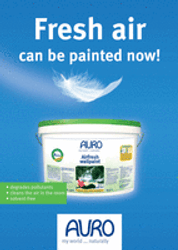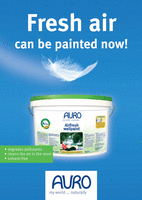Indoor Air Quality (part 2)
Posted by Morag on 25th Feb 2016
You may have seen in the printed version of Your Local Crowd our article (reproduced here on the old Celtic Sustainables blog) about indoor air quality and in particular formaldehyde from some scented candles as highlighted in the BBC Trust Me I’m a Doctor programme in January this year and a later BBC article about air pollution. Further research has found that there are a lot of other places from which formaldehyde can off-gas into the air in your home too.
Here are some other potential sources of formaldehyde in your home;
Pressed Wood Products
Some plywoods, MDF, particleboard and other pressed-wood products are glued together with urea-formaldehyde resins. These “woods” (or more specifically the glues in that hold the wood together) can off-gas formaldehyde into your home especially if they are placed in warmer areas like near a radiator or in an area that gets a lot of sunlight. If you are making your own furniture from pressed-wood products you need to be particularly careful not to breathe in the wood dust.
To reduce your exposure to formaldehyde from pressed-wood products you can:
- look for woods that are not glued together with urea resins (actual wood is best!) these press-wood products may be labelled as “low gas” or “zero gas”,
- move pressed-wood products away from heat sources,
- use a low VOC (Volatile Organic Compound) paint or varnish to seal surfaces to prevent the formaldehyde from off-gassing.
Some toiletries
According the Campaign for Safe Cosmetics formaldehyde and formaldehyde releasing preservatives can be found in lots of different products from nail polish to shampoo. In an opinion piece from the EU Scientific Committee on Cosmetic Products they determined that it is difficult to find out the true extent formaldehyde in cosmetics because at least four ingredients (imadozolidinyl urea, diazolidinyl urea, sodium hydroxymethyl glycinate and benzylhemiformal) rapidly release to formaldehyde when dissolved in water! On top of this formaldehyde may not be listed as an ingredient if it is used to preserve the raw materials in the product (it is then classed as an unintentional contaminant).
There is really only one way to reduce your exposure to formaldehyde in toiletries (other than making your own) and that is to look for formaldehyde free on the product label (and conversely check the ingredients list for formaldehyde).
Cigarette smoke and e-cigarette vapours;
Breathing second-hand and third hand smoke indoors is a contributing factor for formaldehyde exposure as formaldehyde is release during the burning process.
Some scientists writing to the New England Journal of Medicine are also concerned about formaldehyde in e-cigarettes. Typical solutions of e-cigarette liquids include propylene glycol, glycerol both of which are known to degrade to formaldehyde.
The best way to reduce your exposure to cigarette smoke and e-cigarette vapours is to keep away from them!
How to improve your indoor air quality;
If you live with a smoker the ways to reduce your exposure to formaldehyde are the same as for general exposure:
- Keep your home well ventilated. Open doors and windows whenever you can.
- Reduce your use of products that contain formaldehyde and ingredients that degrade to formaldehyde.
- Place plants that absorb chemicals and free-radicals around your home like spider plants and ivy.
- Paint rooms with paints that have been scientifically shown to absorb formaldehyde like AURO Airfresh (328). This paint has a special combination of raw materials that, using sunlight (or artificial light), breaks down odours and pollutants in your home into neutral substances. It has been scientifically tested on formaldehyde. The results showed that over 90% of formaldehyde is broken down within the 1 hour of exposure to the paint! This paint is available in white (great for ceilings!) and is also tintable with Auro 350 colours.




